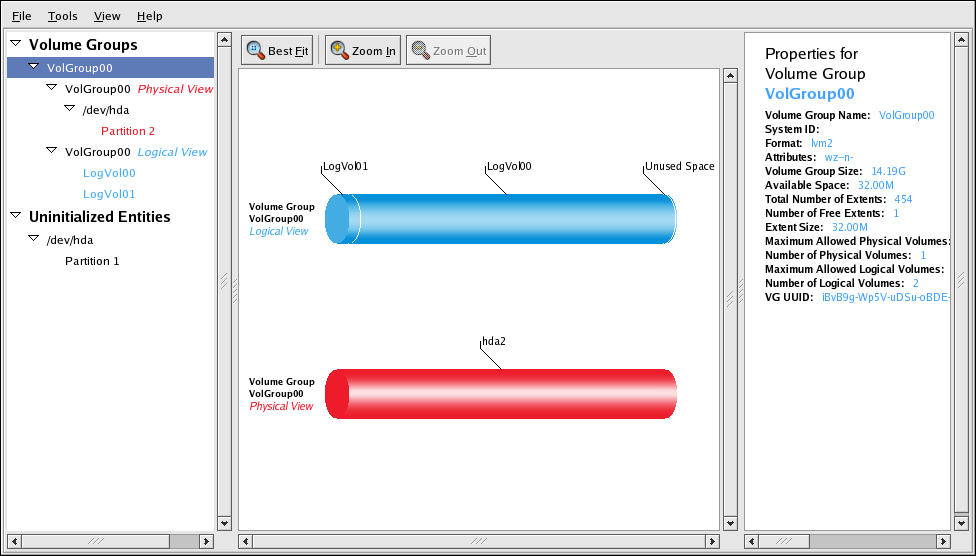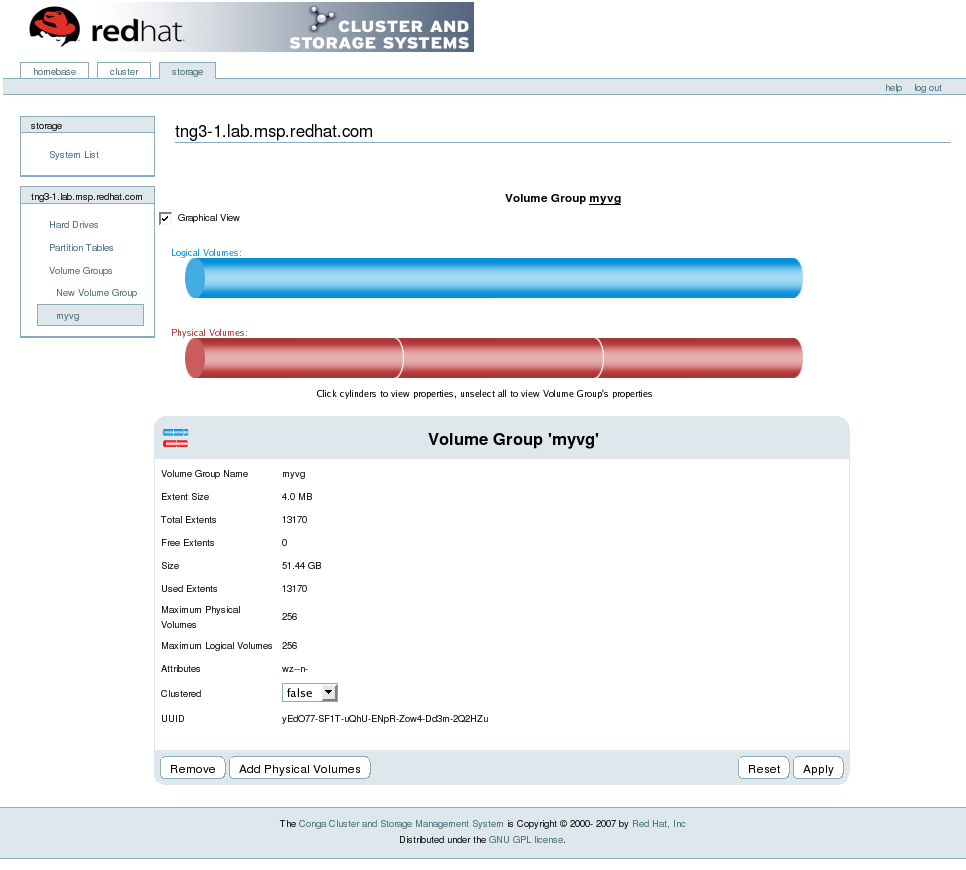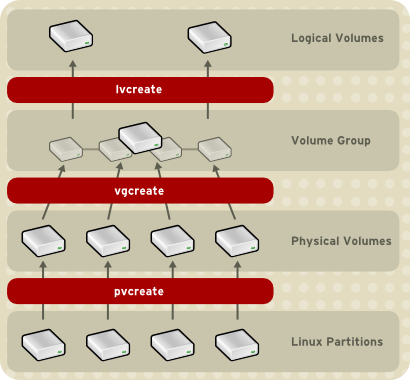Red Hat Training
A Red Hat training course is available for Red Hat Enterprise Linux
1.6. 叢集邏輯卷冊管理員
CLVM(叢集邏輯卷冊管理員,Cluster Logical Volume Manager)提供了叢集版的 LVM2。CLVM 的功能與單機上的 LVM2 無異,但是能使所有卷冊讓 Red Hat 叢集中的所有節點使用。用 CLVM 建立的邏輯卷冊能讓叢集中的所以節點使用該邏輯卷冊。
The key component in CLVM is
clvmd. clvmd is a daemon that provides clustering extensions to the standard LVM2 tool set and allows LVM2 commands to manage shared storage. clvmd runs in each cluster node and distributes LVM metadata updates in a cluster, thereby presenting each cluster node with the same view of the logical volumes (refer to 圖形 1.14, “CLVM Overview”). Logical volumes created with CLVM on shared storage are visible to all nodes that have access to the shared storage. CLVM allows a user to configure logical volumes on shared storage by locking access to physical storage while a logical volume is being configured. CLVM uses the lock-management service provided by the cluster infrastructure (refer to 節 1.3, “Cluster Infrastructure”).
注意
Red Hat 叢集組所使用的共享儲存空間需要執行 CLVM 系統程式(
clvmd)或高可用性 LVM 代理程式(HA-LVM)。如果您因為操作上的理由或沒有正確的使用權利,無法使用這兩個程式,您絕不能對共享磁碟使用一般的 LVM 程式,因為這會導致資料損毀。如果您有任何相關問題,請聯絡 Red Hat 客服代表。
注意
要使用 CLVM,您必須稍微改變
/etc/lvm/lvm.conf,才能鎖定叢集。

圖形 1.14. CLVM Overview
You can configure CLVM using the same commands as LVM2, using the LVM graphical user interface (refer to 圖形 1.15, “LVM Graphical User Interface”), or using the storage configuration function of the Conga cluster configuration graphical user interface (refer to 圖形 1.16, “Conga LVM Graphical User Interface”) . 圖形 1.17, “Creating Logical Volumes” shows the basic concept of creating logical volumes from Linux partitions and shows the commands used to create logical volumes.

圖形 1.15. LVM Graphical User Interface

圖形 1.16. Conga LVM Graphical User Interface

圖形 1.17. Creating Logical Volumes

